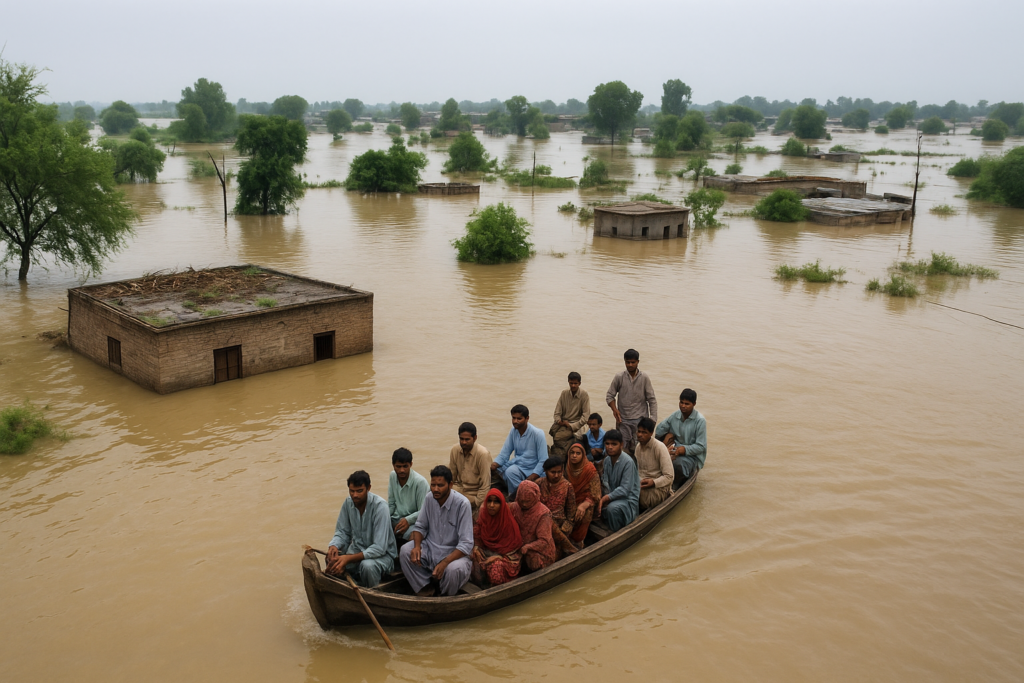
Pakistan’s Punjab province is facing one of the worst floods in its history, putting nearly two million people at risk as torrential rains and overflowing rivers continue to devastate communities. Entire villages have been submerged, with homes, crops, and livestock swept away, leaving thousands of families displaced and struggling for survival. Rescue operations are underway as emergency teams, including the army and local authorities, work tirelessly to evacuate residents from low-lying areas, but the scale of the disaster has made relief efforts extremely challenging.
The floodwaters have destroyed critical infrastructure, including roads, bridges, and power lines, cutting off several districts and hampering the delivery of aid. Hospitals are overwhelmed as cases of waterborne diseases rise, while shortages of clean drinking water and food are worsening the plight of survivors. Farmers in Punjab, the country’s agricultural heartland, have been hit particularly hard, with vast stretches of fertile land under water, raising fears of a severe food crisis in the coming months.
Authorities have urged people living near riverbanks to relocate immediately, while thousands have sought shelter in temporary camps set up by the government and relief organizations. International humanitarian agencies have also been alerted to provide assistance as the situation continues to deteriorate. Experts warn that if heavy rains persist and river levels rise further, the humanitarian crisis could deepen, leaving millions more vulnerable.
This unprecedented flood has once again exposed Pakistan’s vulnerability to climate change, with erratic monsoon patterns and melting glaciers in the north contributing to extreme weather events. For Punjab, a province that sustains much of the country’s population through its agriculture, the devastation marks a critical moment that calls for immediate relief, long-term rehabilitation, and stronger climate resilience measures to prevent future tragedies of this magnitude.







Leave a Reply